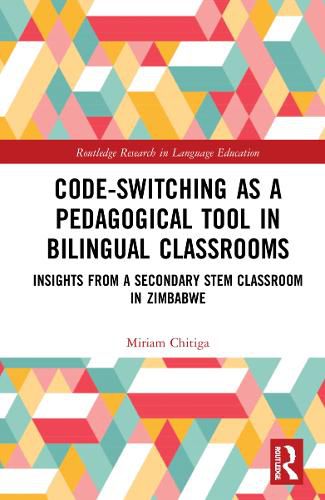Readings Newsletter
Become a Readings Member to make your shopping experience even easier.
Sign in or sign up for free!
You’re not far away from qualifying for FREE standard shipping within Australia
You’ve qualified for FREE standard shipping within Australia
The cart is loading…






Presenting a mixed methods study conducted in a bilingual mathematics classroom in Zimbabwe, this text reveals the semantic pedagogical functions and linguistic forms of code-switching during STEM instruction.
Code-Switching as a Pedagogical Tool in Bilingual Classrooms offers a detailed analysis of code-switching in the context of educational linguistics, and reveals ten major pedagogical techniques which illustrate how teachers use code-switches to engage students and provide guidance, clarification, discipline, and recaps during individual and whole-class interactions. Chapters highlight that code-switching can be used in a targeted manner to harness the cognitive potential of bilingual speakers and enhance instruction. Ultimately, the text identifies implications for teacher education, language policy, and educational leadership more broadly, and demonstrates intersections with key areas including functional, critical, and cultural literacy.
This text will benefit researchers, academics, and educators with an interest in bilingualism, applied linguistics, and secondary education more broadly. Those specifically interested in multicultural education, sociolinguistics and educational policy will also benefit from this book.
$9.00 standard shipping within Australia
FREE standard shipping within Australia for orders over $100.00
Express & International shipping calculated at checkout
Presenting a mixed methods study conducted in a bilingual mathematics classroom in Zimbabwe, this text reveals the semantic pedagogical functions and linguistic forms of code-switching during STEM instruction.
Code-Switching as a Pedagogical Tool in Bilingual Classrooms offers a detailed analysis of code-switching in the context of educational linguistics, and reveals ten major pedagogical techniques which illustrate how teachers use code-switches to engage students and provide guidance, clarification, discipline, and recaps during individual and whole-class interactions. Chapters highlight that code-switching can be used in a targeted manner to harness the cognitive potential of bilingual speakers and enhance instruction. Ultimately, the text identifies implications for teacher education, language policy, and educational leadership more broadly, and demonstrates intersections with key areas including functional, critical, and cultural literacy.
This text will benefit researchers, academics, and educators with an interest in bilingualism, applied linguistics, and secondary education more broadly. Those specifically interested in multicultural education, sociolinguistics and educational policy will also benefit from this book.